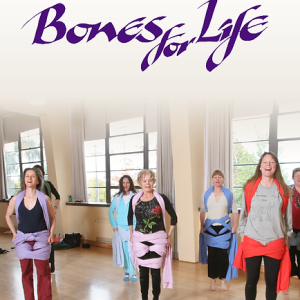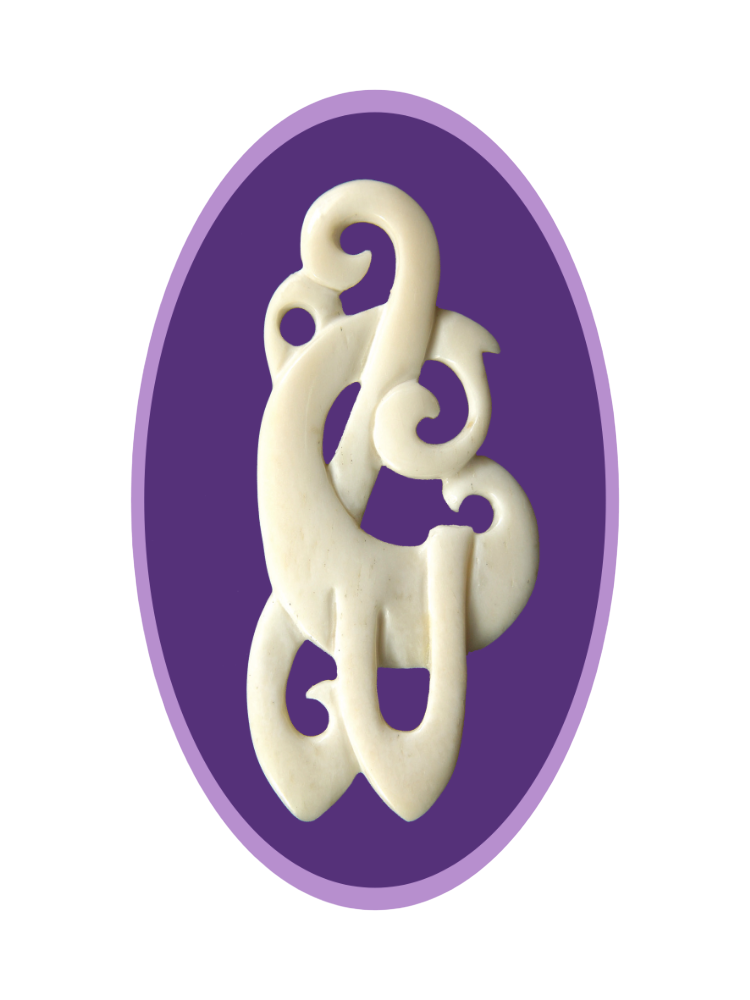
Welcome
Bones For Life
The Movement Intelligence of
Bone Strength and Weight-Bearing Posture
Based on Dr. Feldenkrais’ approach to somatic learning
The movement answer to the functional failure of osteoporosis
Main Objectives :
Develop harmonious coordination
Empower lively & dynamic gait
Train in bone building walking in rhythm
Reach Quality of natural fitness at any age
Restore resourcefulness of equilibrium & stability
Align posture in the body language of self confidence
The Body Exhibition
About The Program
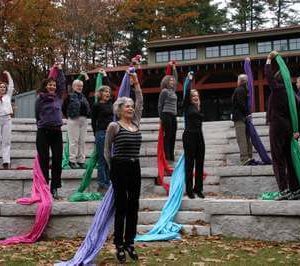
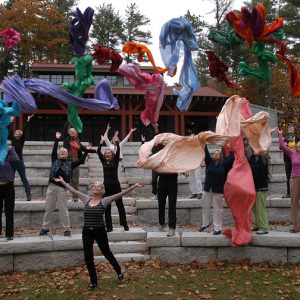
A dynamic and springy walking style is the natural motivation which stimulates the organism to strengthen its bones. It is the rhythmical pulsations of lively steps that enable the blood, which carries nutrients and oxygen, to penetrate the solid tissue of the bones and provide for growth of new bone cells. A well-aligned posture and harmonious coordination of movement are essential for sustaining the springy pressure of this dynamic walk which can stimulate bone strength.
Comparative research shows that African women, who carry massive loads on their heads with effortless grace, are one hundred times less liable to fractures than women in the West, despite the fact that their bone density is lower than that of Western women.
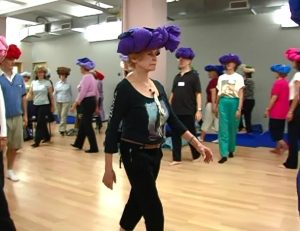

Bones for Life® — Because there’s No Pill for Posture!
The Bones For Life program addresses the functional aspect of movement skill involved in withstanding such a load by offering a series of movement processes that improve the quality of body coordination. The emphasis of the program is on organizing the skeleton into a safe weight-bearing posture to sustain springy pulsations of force-the natural code for bone strength and suppleness.
Bones for Life is based on the teachings of Moshe Feldenkrais for the re-education of movement habits. Awakening the self to improve the quality of moving is achieved through gradual experience of unused options. The learning is geared to the harmonious integration of all body parts in functioning, integration being the central characteristic of any organism. The suggested ways of moving are explored in the perspective of the reciprocal coordination of all body parts.
The movement configurations in the Bones for Life program are modeled after
the primal patterns of locomotion in nature. The efficiency of these patterns has been proved throughout millions of years of evolution. These basic patterns of walking are re-learned in the program in greenhouse conditions of safe and gradual practice that are adaptable to individual pace and ability.
Simple tools facilitate the development of controlled resistance to pressure, like using a strip of cloth as a harness, pushing a wall, lifting weights, or learning safe ways of falling.
Objective digital bone density measurements of people who regularly practice the program show meaningful improvement in many cases. On a subjective level, participants find joy in their practice and they are more satisfied with their competence in moving. The increased confidence in a more reliable skeleton inspires a sensation of biological optimism.
For the scientific article about low BMC and BMD in African women with minimal fractures click here*
A healer in every home featuring Bones for Life | |
Program Rationale
The Ideal Movement
Please grant me flexibility to have freedom of movement,
Cast strength in my spine to have a reliable posture,
And the wisdom to know the difference.

Recent research from NASA has brought to the public consciousness the issue of the loss of bone mass and has transformed the attitude toward it. Prior to the investigations by NASA into this topic, the disintegration of the bones was perceived as a normal part of the process of getting old. This belief lost credibility after the young astronauts, the models for fitness in Western society, returned from space with weak bones. It became apparent that the issue of deteriorating bone tissue does not depend upon age alone, but rather,
is dependent on the reaction of the organism to the conditions in which it lives.
A zero-gravity environment does not give the organism the clue it needs for building strength in its bones. New cells are not generated. Old cells continue to complete their life cycle as usual. Without a new generation of cells, the population of bone cells keeps diminishing. The bone becomes weak and is at risk of fracture.
Loss of bone tissue: Is it an irreversible
natural process of aging or a response to life conditions?
The good news is that NASA has shown it is possible to restore bone density even after it has been impoverished. The organism responds to the conditions of its environment. On returning from space and producing pulsations of springy pressure through the re-confrontation with gravity, the bone re-generates. This can only be achieved if the skeleton is geared to navigate an efficient and continuous trajectory of posture, which can sustain this force of pressure. Of course, there are also nutritional aspects involved in this process of rehabilitation.
For the general public, this new approach carries an encouraging message. There is a chance that the process of bone disintegration can be reversible under certain conditions. The purpose of the Bones for Life program is to reconstruct the functional conditions that are capable of stimulating re-growth of bones, even after they have been impoverished.
The purpose of the Bones for Life program is to reconstruct the functional conditions that are capable of stimulating re-growth of bones, even after they have been impoverished.
A large number of research studies have investigated the failure of the mature body, especially in women, to absorb the calcium and minerals from the blood into the bone. Beyond the relevant chemical, nutritional, and hormonal aspects of the problem, researchers have consistently pointed to the lack of vigorous movement as one of the factors involved in the failure of mineral absorption and the weakening of the bone tissue.
In fact, the lifestyle of people in the West tends toward avoiding any motion which can be substituted by machines. It is considered to be a technological achievement to have the work of the body done by wheels, lifts, and automatic escalators. How is it possible to benefit from technology without paying a price in our physiology? How can body movement affect the strength of the bones?
Researchers consistently point out that lack of vigorous movement is one of the reasons for the failure of the mature body to absorb essential minerals from the blood into the bones.
Natural movement is a contest between body weight and the gravity pull of the planet. A creature without a skeleton is able to achieve movement in the environment by recruiting its muscular effort, contracting the body, and releasing it to expand. Creatures with a skeleton have an advantage, since the skeleton can outsmart gravity and spare the work of the muscles. If the human skeleton is constructed with one bone on top of the other in approximately a vertical line, so that the body can lean on itself, no muscular effort will be required to stand upright in equilibrium. Thus, when the pressure of the body weight is increased through the stepping foot on the ground by the springy pressure of the straightening knee, a counter pressure is produced from the earth, equivalent in its force to the weight of the body. When the skeleton is organized into a firm and well-aligned axis, this counter pressure
from the earth pushing upward, lifts the posture and enables the easy launching of the next step forward.
An efficient human movement is economical in that it utilizes its own body weight to propel movement in the environment. This is true, providing that the skeleton can organize itself into a certain configuration and also the reverse of it. The skeleton has to be capable of bending its articulations in flexibility, as well as fastening its vertebrae together into a firm longitudinal axis. Along this axis which resembles an unbendable stick, the two-way transmission of forces of both the body weight and the response of the planet can pass through. This pressure transmission streams undisturbed from one end of the body to the other.
Movement outsmarts gravity by the emphasized thrust of the springy step on the earth with the force of body weight.
As a reaction, the counter pressure returning from the earth lifts up the body and moves it forward with ease. In order for the two-way force to pass from one end to the other with no loss and no delay, the skeleton needs to be organized to accommodate the continuity of this domino effect style of transmission.
This cycle of pressure and counter pressure occurs in rhythmic pulsations with each walking step. The sophisticated skeleton is capable of articulating its joints and allowing a soft yielding to gravity while one foot is detached from the ground and passes through the air to its next step. When the foot lands, the skeleton is immediately capable of tightening one vertebra to the next, aligning the bones into a firm and uniform axis which will sustain the impact of the response of the ground and utilize it for achieving verticality. The roles of softness and firmness are then ready to exchange again. No man-made instrument is capable of such polarized transformation in the texture of its own hardware at the speed of a non-voluntary brain impulse.
This alternation of roles between flexibility and stability, between bending down and straightening up, between softness and strength, between
anchoring and detachment, takes place through an automatic skill inherent in the ancient systems of the brain. Man does not need conscious control in order to coordinate the dynamics of walking. It is even difficult for him to construct it intentionally out of cognitive calculation.
The ability to outsmart gravity and transform body weight into a mobilizing force is dependent on the capacity of the joints to articulate and tighten. Coordinating the articulations of the skeleton to work in harmony is a primordial skill of the brain. The propelling power of walking depends on the ability to align the spine into a firm axis, which can apply resistance that matches the weight-bearing pressure, as well as alternately yielding to gravity and releasing the tightening of the joints.
The ability to outsmart gravity and transform body weight into a mobilizing force is dependent on the capacity of the joints to both articulate and tighten.
Mechanically, this alternating springy pattern of walking has the effect of renewing the bones. The rhythmical pulsations shake the body and stimulate the circulation of the blood, increasing the delivery of nutrients and oxygen to every cell of the body. Only vigorous movement will enable the nutrients in the blood to penetrate into the solid tissue of the bone. Only a well-aligned skeleton, bridging its curves, will be able to sustain safely the increased load of the pulsating pressure in dynamic movement that is needed for nourishing the bone.
Of no less importance for the health of the bone is the phase of the blood circulation that returns blood from the extremities to the heart and lungs. This is the phase of clearing the residues, created by the metabolic process, from
the tissues. The blood in the veins moves from the extremities upward against the force of gravity and tends to be slower than the nourishing phase, which streams downward from the heart. Difficulties and delays in removing the waste diminish liveliness and may even result in illness. Bone tissue, which sluggish body movement and stagnant circulation do not cleanse thoroughly, is not in a condition to absorb more nutrients for its renewal. It is a blocked tissue, which becomes old before its time.
Without the two-way free flow, the bones cannot build new cells. They become porous and weak, liable to be fractured in a bad fall or even without falling. Some people break their bones just by turning over in bed.
The springy quality of the dynamic movement of walking helps nutrient-filled blood penetrate into the solid tissue of the bone. Without vigorous movement, not only is the material for building new cells denied to the bone, but also the removal of the residues created by the metabolic process is hindered and the vitality of the bones becomes impaired.
From the neurological point of view, the mechanical pattern of well-coordinated walking in a skeleton that is consistently aligned, moving rhythmically, harmonious, and capable of producing springy pressure is perceived by the organism as a signal to strengthen its bones and thicken its tissues. The brain identifies the characteristics of the style of walking which requires strong bones and sets the body so it can meet that need successfully. The rhythmic weight-bearing walking and the strengthening of the bones are interwoven together as the function and the structure adapt themselves to each other.
If the skill of moving oneself is the ultimate criterion for survival, then the crucial motivation to move creates the capability for it. The organism will recruit its resources to fulfill its needs, and it will avoid investing its full
capacity when it does not identify the need for it. What you don’t use, you lose. If an individual does not engage in vigorous movement and does not challenge the bones with a heightened level of pressure, the organism might interpret the diminished activity as a lack of necessity for strength. As a result, the motivation to build strength in the bones will be dropped from the list of priorities. Dull movement lacks not only the mechanical force but also the motivating challenge.
What you don’t use, you lose. With no challenge, competence does not develop. With no dynamic movement,the organism does not have the motivation to become stronger.
In our civilization, as a result of limited activity, not only do the joints become too stiff or too loose, but also the rhythm of moving is fragmented from lack of coordination and the pattern of walking is poorly synchronized. Not only does the line of the skeleton deviate from the trajectory of continuation, exposing the vulnerable segments to compression and pain, but also the internal mechanism, which strives for well-being, becomes inclined to compromise and to neglect its original urge for full vitality.
When movement becomes dull, there is less and less willingness to move, and that person gets stuck in a vicious cycle of deterioration. Dull movement without the springy interplay with gravity does to civilized man what zero gravity does to young astronauts. Movement that is not springy does not stimulate strength of bones nor does it encourage erectness. With weakened bones and collapsed posture, the willingness to move fades away and so on and on.
The vicious cycle of bone deterioration: Dull, non-springy movement and poor posture do not allow dynamic movement and fail to stimulate building new cells in the bones. Weak bones and collapsing posture limit the willingness and the capacity to move.
The way out of this vicious cycle is through increased liveliness in physical movement. The quality of body organization, posture, and coordination of movement needs to be upgraded in order to sustain successfully the
challenge of the heightened pressure of dynamic movement. Creating conditions to increase bone strength through well-organized posture and dynamic movement is the point of departure for the Bones for Life program
The way out of the vicious cycle is through increased liveliness in physical movement. The quality of body organization, posture, and coordination of movement needs to be upgraded in order to sustain successfully the challenge of the heightened pressure of dynamic movement. Creating conditions to increase bone strength through well-organized posture and dynamic movement is the point of departure for the Bones for Life program.
The pressure required to nourish the bone is not just any pressure, and it is certainly not the maximum of static pressure. The pressure which can stimulate the strengthening of bones needs to be equivalent, in its volume, pattern, pace, and the proportion of its distribution between body parts, to the pressure which prevails in the most fundamental of movements: a healthy, vigorous walk.
The climate of pressure, which supports the strength and suppleness of the bone, exists in a very specific range of pressure. Any deviation from that level will not be useful in the best case, and can definitely cause damage in the worst. Sharp, chronic pressure will cause erosion. Moderating the level of pressure is not a simple task. Avoiding the compulsive urge to express intention by maximum power, rather than by maximum sensitivity, requires awareness and a sense of measure.
A crucial issue for the program of stimulating bone strength through dynamic movement is how people with a low level of fitness will be able to confront challenges of intense pressure. How can people, who have neglected physical activity to a degree that their bones have become porous and are at risk of being fractured, experience dynamic movements without frustration or actual
damage? How can people with posture that has deteriorated and who are limited in movement options, tolerate meaningful bouncing without getting hurt in the vulnerable points of their dysfunctional alignment? Truly, the people who need dynamic movement the most are the least able to achieve it.
The central issue of a program for stimulating
bone strength is: How can people with a limited range of movement and unreliable
posture confront the challenges of intense pressure without getting hurt?
Indeed, the personal safety of each learner is the primary consideration of the program for restoring the strengthening of the bones, and this is its specific contribution. The movement processes of the Bones for Life program are presented in a learning environment that secures moderation and self care. The program offers many safety tools to protect the vulnerable joints of the spine’s curves, the knees, and the hips, as they take on the function of springiness.
The Bones for Life program draws its effectiveness from the approach to somatic learning developed by Dr. Moshe Feldenkrais (Israeli scientist, 1904-1984). His methods of Awareness Through Movement® and Functional Integration® offer re-education of habitual patterns of self-organization. A central key in the Feldenkrais approach to improving a function is through the perspective of integration. In order to improve a specific, seemingly local,
dysfunction and alter its counter-productive pattern, there is a need to re-adjust the habits of all the other parts of the body so they can support the new, suggested options. Taking a clue from the integration of the totality is congruent with the way in which any organism operates. A living organism functions like a network in which every part affects the whole.
Habits of movement and posture, which are as persistent as any other addiction, start to release their grip when approached from the perspective of integration. Feldenkrais said that habits can be changed in the same way that they were formed. Just as a baby acquires mastery over the physical functions of crawling and walking through endless experimentation, so does the process of reforming habits guide the adult learner to explore a variety of unused options, while noticing the cooperation of the rest of the body in the specific movement.
Each part of the body is dependent on the cooperation of the whole. This is a characteristic of any living organism. The Feldenkrais Method® communicates with the brain through this language of integration. In order to restore an impaired function, it is necessary to negotiate for the agreement of all body parts to update and re-adjust their habits.
This process activates the faculty that can find harmonious solutions for personal well-being. Refining the quality of movement awakens the brain to the most basic property of any healthy living creature: the non-compromising urge to reach maximum well-being. Instead of the superficial imitation of borrowed authoritarian ideas, the autonomous re-learning through the Feldenkrais Method® sharpens one’s own judgment mechanism and promotes listening to one’s own feedback, which can navigate the movement toward its optimal quality.
Acquiring optimal quality of movement coordination is not merely a physical endeavor. On the contrary, physical effort tends to obscure the subtleties of personal awareness, which could lead to well-organized movement.
Discovering useful coordination in the laboratory of self-experience requires a supportive atmosphere, so that the over-attachment associated with the habits can dissolve. In order to gain the accuracy of self-assessment that is needed, the threshold of effort needs to drop to a minimum. In order to be able
to respect one’s own boundaries of capability, one needs to move slowly, at a pace that allows inner listening and awareness. Even the confrontation with gravity is made softer in the Feldenkrais Method®, since the person is lying on the floor most of the time. The floor provides the opportunity to bypass the habitual tensions and discover new possibilities in a way that the organism can accept.
In the Bones for Life program, however, it is necessary to apply increased force of dynamic movement within a vertical weight bearing posture. The impact needed for stimulating bone strength can be achieved through springy and a specific rhythmical, quick pace of moving. The Bones for Life program uses the laboratory of coordination from the Feldenkrais Method® and applies its principles of integrative somatic learning to the specific context of springy and dynamic movements within a vertical weight-bearing posture as needed for stimulating bone strength.
The Bones for Life program uses the laboratory of coordination from the Feldenkrais Method® and applies its principles of integrative somatic learning to the specific context of springy and dynamic movements within a vertical weight-bearing posture as needed for stimulating bone strength.
The Bones for Life program offers a variety of protective means to ensure the safety of the body as well as to enable detachment from habitual patterns. The major tool for sustaining weight-bearing pressure without risk of injury is a strip of cloth, seven meters long, which is wrapped around the body like a harness. The harness holds the body together, giving it the reliable strength of an axis. It guides each joint to assume its proportional disposition in a more functional alignment, so that the body’s ability to withstand pressure will be increased. This exposure of the bones to increased pressure in movement is
the source of their healing. The harness allows even unorganized people to experience within themselves a model of a more efficient posture with which they can develop both a confident self image and the actual capacity to practice weight-bearing movements without risk. A few daily bouncing motions in the harness can provide the opportunity for each body part to take its share of responsibility in an improved way of self-organization. The improved alignment is spontaneously reflected afterward in standing without the crutch of the harness and can be the beginning of an upgraded posture.
The harness, a strip of cloth seven meters long, holds the body together, giving it the strength of an upright axis. It allows even unorganized people to experience within themselves a model of a more efficient posture with which they can develop both a confident self image and the actual capacity to practice weight-bearing movements without risk.
Another simple means for safe learning is the use of a wall for resistance. Pushing the wall with the hands or feet while lying down guarantees a more efficient pathway for the transmission of pressure throughout the skeleton. Leaning the back on the wall while standing gives a better chance for the force produced by the foot to generate a domino effect of smooth and consistent transmission of pressure streaming up from end to end.
Adding a challenge of altering the surface of the wall by using balls and props can encourage the posture to realign in a way that evades the old habit, thus awakening the brain to its intelligence for adjustability. In addition to leaning the back onto the altered surface of the wall, the person begins to walk in place. In the context of this natural pattern of walking, which the body comprehends and with which it is fluent, the altered alignment of the posture is reinforced. Old habits begin to open up and undergo transformation. The walking activity reinforces the newly-learned alignment of the posture in which it is carried out. The movement re-establishes the structure in which it is operating. The combination of creating a change in structure, within the context of performing a dynamic function, results in outstanding improvements.
The sixty movement processes of the Bones for Life program use movement configurations which are derived from the vocabulary of movement patterns in nature. These patterns have been screened for maximum efficiency
throughout eons of evolution. They are registered in the functional memory of the species. Reactivating these primordial formulae provides access to a reservoir of knowledge that awakens the brain to its core talent – the determination to achieve well being. It is like being given a hint of a few notes from a long-forgotten children’s song, which you can then continue by yourself with enthusiasm.
At the end of a movement process that is specifically designed for the purpose of strengthening the bones, the body chooses a more ideal posture on its own. The head rests on top of the spine and, in walking, the movement flows in harmony and liveliness.
After experiencing a more efficient organization in the practice of the program, any movement in daily life will continue to do the work of strengthening the bone. The springy pressure of walking will stream unhindered through the well-aligned skeleton without being blocked by postural barriers. The pulsations of pressure in a well-organized body will reach from end to end with no loss in force or rhythm, enabling the blood circulation to penetrate even the hard tissue of the bone and to nourish the renewal of its cells.
All of the processes of the Bones For Life program use movement configurations derived from the vocabulary of movement patterns in nature, which have been screened for maximum efficiency throughout eons of evolution.
Bones are live, responsive organs, and it is possible to provide them with the original conditions which are designed to stimulate their strength. The health of the bones is a part of one’s personal ecology, which is in the hands and feet of every man and woman, unconditioned by any external authority. Every person who can walk is capable of halting, to a greater or lesser degree, the process of impoverishing the bones. The deterioration can even be reversed by natural movement. Clinical measurements, taken after four months of devoted work by a group of learners in Tel Aviv (2001), showed unexpectedly encouraging results. (See Case Studies for examples of bone density tests.)
Every person can learn at his or her own pace, safely and gradually, the fundamental patterns of natural movement and can recapture a style rich in
springy pressure, thereby providing the organism with the key to strengthen its bones.
Natural movement, which resonates through every part of the body, integrates them all into graceful harmony. It organizes the body both for stability and flexibility. It inspires trust in the bones as well as in the freedom of the joints. The joy which emerges in performing vigorous movements with ease and success is a constant companion to the dynamic activity. I call this joy, biological optimism. This biological optimism in regaining natural movement is the real benefit of the program; strengthening the bones is the bonus.
Biological optimism: the true benefit of the program.
Strengthening of the bones: the bonus.
Themes of the process
Your bones are as reliable as your posture is able to sustain your body weight in an efficient alignment.
Your bones are as strong as your activity is dynamic and able to cope with challenges that demand strength.
Your bones are as healthy as Nature meant, if your movements are natural and all your body parts are harmoniously coordinated.
Stimulate your bone strength and experience the biological optimism of a reliable skeleton
Coordinate a springy and dynamic walk
Align your posture into safe weight-bearing uprightness
Develop your skill of restoring equilibrium
Enhance the pleasure of moving
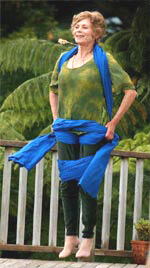
The program concepts
These concepts are embedded in the design of Bones For Life movement processes. For fuller development of these concepts, visit the Program Rationale.
1. Dynamic movement – A natural key for stimulating bone strength
- Using body weight for self-locomotion through springy pressure
- Rhythmical micro-bouncing potential for nutrients to penetrate into solid bone
- Need triggers capability; lifting weights in safe body organization
2. Characteristics of bone-strengthening pressure
- Pulsations of rhythmical and springy pressure
- Volume of pressure equivalent to dynamic walk
- Organizing the posture in two-way consistent passage of flow for the body weight bearing down and for the counter pressure from the earth lifting up
3. Somatic learning through exploration of unused options
- The brain chooses to update its habit when the new suggestion is accepted by the entire body
- Awakening the brain to authentic judgment; shaking automatic response by acting in non-habitual coordination
- Balance between comfort and challenge
- Organization vs. effort; listening to harmonious quality vs. achieving quantitative goal
- Descend in order to ascend; withdraw in order to advance
- Resist in order to strengthen; challenge in order to stimulate capacity
- Conscious exaggeration for controlling a non-conscious counter-productive tendency
- Sensitivity to individual boundaries vs. ambition to perform a standard
- Neurological diplomacy: intentional imitation of a dysfunction in order to awaken the brain to drop it
- Reciprocal relationships: models of reins vs elastic
- Put the engine behind: moving from the backbone vs recruiting the soft front
- 20% pressure, the optimal effect
4. Organic patterns of self-mobilization
- Integration: harmonious cooperation between all body parts
- Domino effect: navigating a continuous trajectory for undisturbed transmission of pressure from foot to head
- Counter symmetry: exchanging roles between right and left
- Walking: alternating response to pressure between wave and axis
- Proportional distribution of labor between center and periphery
- Using arms as legs; re-empowering the wrists
- Ping-pong integration through back and forth communication between polarities
- Sphincters: the antigravity internal network
- Jumping: the ultimate guide to weight-bearing posture
5. Strategies for outsmarting gravity: the skeleton as the main device for effortless vertical posture and easy mobilization
- Tapping the heels – rhythmical pulsations of springy pressure
- Transmission in wave – differentiating the spine in undulation
- Transmission in axis – undifferentiated spine to sustain pressure
- Taking the power for lifting up from pushing down
- Detaching weight in an airplane style of gradual sliding contact vs. using helicopter style of direct taking off
- Jumping: utilizing one’s own weight to provoke the uplifting force from the planet
- Ideal movement: all body parts are equally unimportant
- Ideal posture: skeleton leans on itself with no work of the muscles
- The harness as a loan of integration
- The power of visualization
6. Applying organic patterns of walking in greenhouse conditions
- Applying interconnections of a natural walk as a context for introducing new ways of bone-strengthening pressure
- Pushing a wall in lying down and standing up
- Using a harness to enhance security and uniformity of axis
- Using knots and props to elicit changes in posture
- Resisting movement in order to clarify it
- Creeping the prototype of self-propelling organization
7. Strengthening bone conditioned on aligning the skeleton into a weight-bearing posture
- The primary consideration: personal safety
- Aligning the neck: avoiding over-compression of in-curve
- Aligning the lumbar: bridging upper and lower body
- Reorientation of hip joint: aligning legs to body
- Functional knees: eliciting spontaneous springiness
- Recapitulating intelligence of feet: distribution of pressure determines posture
- Strengthening the spine: initiating movement from the back vs. over-emphasizing stomach muscles
- Freeing the rib cage: the key to reorganization
8. Challenge builds motivation
- Getting familiar with a style of power
- Pulling hands: reorganizing upper body through the function of climbing
- Regaining equilibrium by cultivating the courage to risk it
- Falling down wisely: learning to reduce injury
9. Posture: the graphology of personality
- Upright alignment: the body language of assertiveness and dignity
- The social projection of posture: a representation of self assessment
10. Results of the natural program for stimulating bone strength
- Objective assessment: clinical measurements of bone density before and after period of training
- Subjective assessment: sensation of biological optimism
Study
NEW PROGRAM MAY HELP COMBAT OSTEOPOROSIS
Kansas City, Mo. — May 9, 2005 – Bone density improved in women within a few months of doing Bones for Life® lessons, the program’s originator Ruthy Alon reported today at the Aerospace Medical Association’s annual meeting. The women learned to do weight-bearing movements with an efficiently aligned spine.
“Bones for Life® improves posture, restores equilibrium, and enhances the pleasure of moving,” said Alon. “Your bones reliably sustain your weight, and movement becomes pleasurable, inspiring self confidence and biological optimism.”
Bone Mineral Density (BMD) improved in a statistically significant
way in the 31 female participants, aged 28 – 69 years old, who worked
with Ruthy Alon for four months, meeting three hours per week. BMD is a
measurement to diagnose osteoporosis, which is a bone disease that can lead to bone fractures, disability and even death.
Alon reported that Bone Mineral Density (BMD) improved in the forearm (the distal radius). The diagnostic device used in study was a Speed of Sound Sonometer. Before doing the Bones for Life Program, testing showed BMD scores ranged from minus 3.70 to plus 1.40. After four months in Alon’s program, BMD scores ranged from minus 3.50 to plus 2.70, a statistically significant improvement.
Alon is a Senior Trainer in the Feldenkrais Method®. She was one of Moshe Feldenkrais’s original students. She continues to teach internationally and is now training others to teach Bones for Life in the U.S. and other countries. To learn about Bones for Life and where it is taught, see
Visual Overview
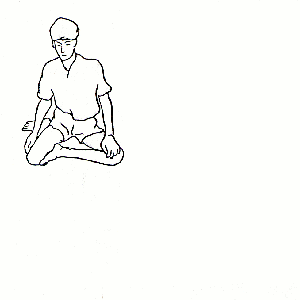
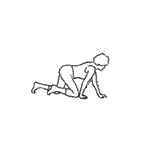
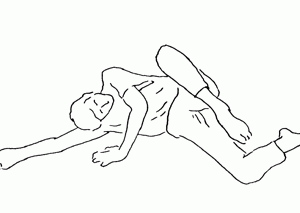
Stimulate your bone strength and experience the biological optimism of a reliable skeleton
Coordinate a springy and dynamic walk
Align your posture into safe weight-bearing uprightness
Develop your skill of restoring equilibrium
Enhance the pleasure of moving

